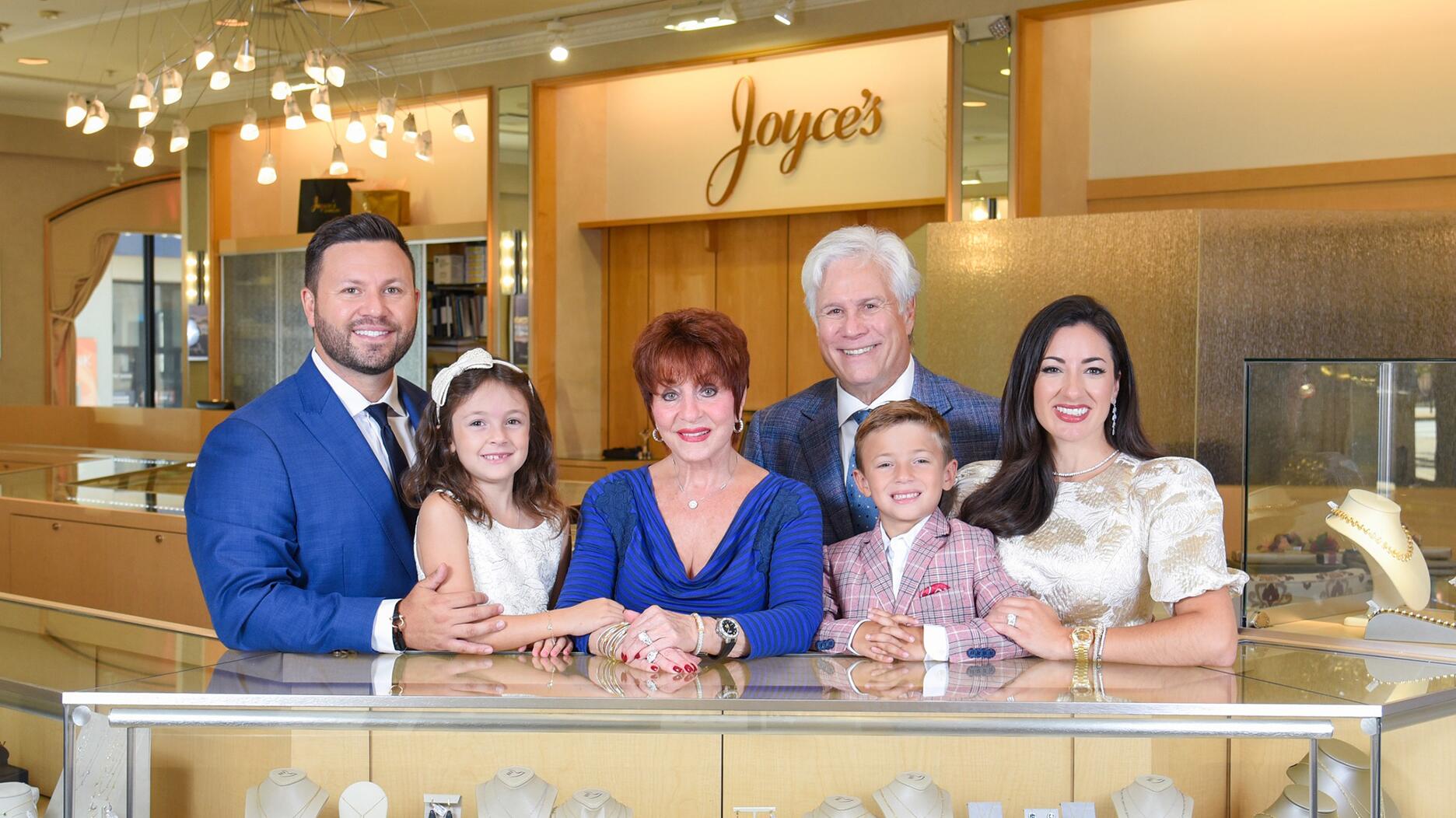The announcement coincided with its full-year results, with growth driven by its jewelry brands.
The World Is Listening
Today’s consumer wants to shop with companies that share their values, and they aren’t afraid to call out those that stay silent on matters of social injustice and inequity.

In the politically divided United States in particular, the typical line of thinking for jewelry retailers and designers has been: Why estrange any potential customers?
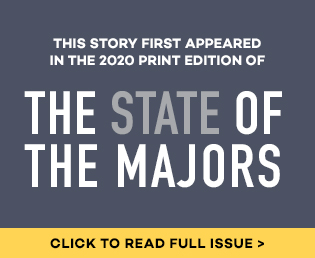
Then 2020 happened.
George Floyd’s death in police custody set off a wave of political activism around racial issues unprecedented for the millennial and Gen Z generations.
The old ways of speaking to their customers might no longer suffice.
Several factors laid the groundwork for the new normal brands are facing as consumers demand companies speak out and actively work to combat racism.
One is the social climate that millennials and Gen Z—the generations overwhelmingly protesting for racial equity and asking companies to do the same—have come of age in.
They have shown to be more liberal—and are more diverse—than generations before them, and the act of protesting has becoming normalized in their recent adulthoods in response to a tense sociopolitical climate.
The Women’s March in 2017 stands as the largest single-day protest in U.S. history (though attendance-wise it pales in comparison to the ongoing Black Lives Matter demonstrations that broke out nationwide following Floyd’s death). There have also been multiple, youth-led protests over the issues of climate change and gun control in recent years.
“Customers are putting their money behind the brands whose values align with theirs, and they’re doing their diligence on the brands that stay neutral.” – Jen Lowitz, IHPR
This generational characteristic coupled with millennials’ and Gen Z’s connectedness due to social media—giving immediate and ever-present access to an infinite amount of information, plus a direct line of communication to companies—was kindling for the current social justice reckoning.
The result is a cohort that is fed up and looking for accountability.
Companies are already aware that younger shoppers are more motivated than the generations before them to spend money with companies that share their social values, like environmentalism, by supporting a brand that, for example, works to reduce waste or commits to carbon neutrality.
It’s a trend that pre-dates the 2020 Black Lives Matter protests.
“Customers are putting their money behind the brands whose values align with theirs, and they’re doing their diligence on the brands that stay neutral,” says Lowitz.
All these elements have contributed to an environment in which consumers want to buy from companies they perceive as being part of the solution to inequality, and they’re being clear about that online.
Cindy Krupp, founder and president of Krupp Group, which represents brands such as Eva Fehren, Foundrae, Marla Aaron, Michael Stars and MOTHER denim, says, “With the use of social media, customers can be vocal and be the catalyst for change within the world of their favorite brands.”
The #BlackoutTuesday Debacle
Nothing quite distills the new pressure companies are facing, and the difficulties in navigating it, like Blackout Tuesday.
Blackout Tuesday originated in the music industry and was intended as a day for record labels and artists to refrain from releasing music in recognition of racism against Black people and police brutality.
It grew from there, with people on Instagram opting to post a black square on their feeds as a sort of virtual protest.
For days prior, messages were circulated about the initiative on various Instagram feed and story posts, though even then, counter-messaging about the possible detriments of
Blackout Tuesday—that it would be at best, performative, and at worst, would detract from Black voices—was already rampant.
Nonetheless, on Tuesday, June 2, Instagram feeds quickly turned into a parade of black squares, most tagged with #BLM or #BlackLivesMatter.
Quickly, other posts surfaced urging anyone who had posted the black square to remove #BLM from the image caption and replace it with #BlackoutTuesday, lest protesters looking for legitimate information on organizing be unable to find it. Some began removing the black square posts from their feed altogether.
With the best of intentions, many brands had committed a blunder in a time of intense scrutiny.
Krupp notes, “This was a tough one, and we were in the weeds with many of our brands trying to help advise what the right thing for them to do was. How do they express their support without just joining in a movement to post a black box when they didn’t necessarily feel that was incredibly thoughtful or effective?
Even when it feels like everyone is engaged in something, brands would do well to inform themselves properly before joining in, Lowitz recommends.
“Brands are so quick to jump on board for fear of looking neutral or apathetic that often, the result clutters the space,” she says. “You have to do some homework, though, before getting on board with social challenges. Where did the challenge come from, and who does it benefit?
“No one has a guidebook, but if a brand is genuine in their attempt to learn and change, then they should stand by that black square and keep it up; it can’t be a one-and-done.”
Lowitz says the team at IHPR found a way to make sure Blackout Tuesday ultimately had real meaning for them.
“One of the ways we used Blackout Tuesday was to overhaul our social feed so that we can see and hear Black voices in a much more balanced ratio. It may have been a literal interpretation, but it’s changed our internal discussions and outreach.”
And therein lies the power of the current moment when it comes to brand impact—a social media trend or online consumer feedback can enact real change in companies that are, ultimately, just trying to make a profit.
Lowitz’s “do-your-best-and-make-it-work” attitude when it came to Blackout Tuesday is the same general philosophy many top industry publicists are applying to their clients’ communications strategies.
Being political or outwardly socially aware is unchartered territory for many companies, and if they choose to heed consumers’ calls to speak out publicly the most important thing is that they put forth their best effort, with one important caveat: They better be for real.
Authenticity, Authenticity, Authenticity
When crafting the right messaging, it’s important to remember that today’s informed consumer will be able to see through any generic brand statements in which a company tries to play the fence.

“With the current political landscape there is no neutral,” Krupp explains. “A brand either has to remain silent about their political beliefs, which I still feel is an acceptable strategy for many brands, or be very vocal about it and be prepared to alienate and, in some situations, lose customers.”
“One of the biggest takeaways for us [at IHPR] from BLM and the movement for social reform is that you have to be willing to sacrifice a paycheck and make your opinion known,” she says.
And a retailer or designer shouldn’t let the fear of getting their messaging wrong stop them from speaking out.
“One of the most important lessons for us was to try and let go of the fear of being called out if we didn’t say the right thing or use the right language,” says Lowitz of her own company’s communications.
“We couldn’t let that stop us from expressing how we felt as people and as an agency.”
One of the keys to enacting real change, without simply being performative, is to start with one’s internal company culture.
Lowitz puts it simply: “Do the work.”
Brands should set aside time to talk team members and include them in conversations about the company’s philosophy and how it can be improved. Employees should be invested in creating a company culture, and in holding each other accountable in meeting goals and living up to standards.
Brands that are new to getting political need to give themselves some leeway when they make a mistake but stay committed to continually improving, Lowitz says.
Krupp took a similar approach when crafting the company’s communications around racial equity—she started from within.
“We at Krupp Group brought [fashion editors] Chrissy Rutherford and Danielle Prescod, who recently launch their own consulting firm, 2BG (2 Black Girls), to do a BLM training with many of our brand partners. They advised on best business practices. I thought it was very informative and helpful,” Krupp says.
Companies also should consider focusing the majority of their efforts on issues important to them, rather than adopting a cause because they feel pressured.
“Don’t pick a cause just because it’s on-trend,” she says.
Brands instead, need to get behind an issue that matters to both its employees and the consumers it reaches, and be able to explain why the cause was selected and how they are going to support it, e.g., through financial donations or volunteering.
Beyond initial efforts, follow-through is key to showing consumers that a company values their opinions and/or is aligned with their personal beliefs and isn’t just jumping on a bandwagon for the sake of political correctness.
“As a brand, if you’re making declarations or commitments to do better, it needs to be authentic, and those brands need to stay committed to that change,” Krupp says.
“If they lose sight of promises made, it can be problematic and is quite transparent to the customer.”
How to Get It Right
Being authentic means if a company publicly shows support for an issue they need to follow up with measurable action.
Regarding anti-racism and inclusivity specifically, Lowitz recommends setting guidelines and goals for inclusive representation in the brand’s social media feeds—in terms of who it follows and what it posts—in its creative and among its staff to “add to the overall voice and vision of the company.”
While companies shouldn’t let fear keep them from speaking out about an issue they feel strongly about, they also shouldn’t craft a social media message or email to customers on the fly and hit send.
First, have trusted sources take a look.
Krupp says brands need to actually read what they plan to put out and contextualize it within the current climate.
Then, they need to get a second opinion. Bring in outside partners, such as a public relations agency, to read through the statement.
The more eyeballs, the better.
“Sometimes I read things that brands post and I think, how the Lord did that get approved? But I think it’s often a matter of people moving too quickly to feed the beast and not gut-checking with team members.”
Krupp says in the COVID-19 era, it’s even more important to check all communications, not just social justice or political messaging, with other people to avoid coming off as insensitive or tone-deaf.
“June was a tough month for many brands but I truly believe it was a time of great reckoning and it kicked off a movement that will create great change, and that was very much needed.” – Cindy Krupp, Krupp Group
From there, set a plan to act, whether it’s volunteering time or donating a portion of sales to a reputable and carefully vetted nonprofit organization.
She mentions luxury chat-commerce platform Threads Styling as an example of a brand getting it right in the current era.
The company has committed to the Fifteen Percent Pledge, an initiative and nonprofit organization founded by Brother Vellies designer Aurora James. The Fifteen Percent
Pledge enlists major companies to commit to stocking 15 percent of their shelves with products from Black-led brands.
“It was not a fleeting moment, but rather, these commitments are reflected in their business development and communications strategy on an ongoing basis.”
Lowitz recommends retailers and designers get personal when opening up new dialogues with their followers and customers.
She advises, “We can’t be afraid to show up on our platforms. In-person interactions are the quickest way for others to get to know you and your values.”
One IHPR client, Ana Khouri, has been working over the past five months to raise money for pandemic and social-related causes, and decided to let her social media followers know.
“She’s been a philanthropist all of her adult life and only recently felt comfortable mixing her personal life with her brand on her social platforms,” Lowitz says. “By doing so, she’s not only raising much-needed funds for causes she cares about, but also letting people get to know her and feel more connected to her brand.”
What Not to Do
Both Krupp and Lowitz agree the worst way a brand can handle criticism online is to attempt to silence it.
“Brands that have been in their own bubble had a hard time grasping the right messaging that was thoughtful and genuinely sincere [in recent months],” says Krupp. “When they were called out, rightfully so, they deleted comments or pushed back to defend themselves. This, in my opinion, is a form of mishandling the situation.”
Lowitz adds: “Editing negative comments has been a real miss. It’s difficult for a company when they’re being called out for past behaviors or held accountable for inaction, but it’s far worse when the less-than-rosy comments get deleted and it’s noticed by the community. It reads as cowardly and silences other voices.”
Moving on with business as usual during a time of intense racial or social strife is another no-go, even if a brand has chosen not to speak on issues.
Companies should consider limiting posts during certain moments, like the height of the protests in the couple of weeks following George Floyd’s death, or toning down certain content amid economic uncertainty.
“The tone-deaf posts of indulgence and abundance during the pandemic are pretty hard to swallow,” Lowitz says.
When speaking out, companies need to be sure to do their research before jumping to post.
“I think when pressure mounted in March with the pandemic, and then in June for BLM, some brands were quick to address the landscape on their platforms, yet hadn’t had the time to necessarily develop strategic messaging for the weeks and months to come,” Krupp notes.
“Eventually, plans were set and messaging was refined, but in these initial moments, it was challenging to get footing.”
This is the most likely period for blunders, so companies would do well to work in a timely fashion but, first and foremost, work thoughtfully so they can begin to formulate realistic plans and avoid being performative or virtue signaling.
So You Messed Up
Adjusting to this new normal style of communications has left many brands struggling and making mistakes.
Some offenses have been more egregious, like internal company complaints gone public about racism or inequity.
More commonly, many have been insidious—speaking out about diversity issues while featuring mostly white models in marketing, for example, or reposting content on
Instagram that turned out to be controversial or offensive.
Experts say it’s not the time to get defensive. Instead, assess, apologize, and change.
“Own it,” Krupp advises.
Companies that miss the mark need to come out with a statement of apology and be clear how they’re going to make the necessary changes.
“With all eyeballs on social at this time, I believe it’s more important than ever that a brand be candid about where they have stumbled and clearly identify their plans to do better … June was a tough month for many brands but I truly believe it was a time of great reckoning and it kicked off a movement that will create great change, and that was very much needed.”
Lowitz recommends approaching damage control comprehensively.
“You have to work on two tracks: What can I do now to make visible changes in the short term, and what do I need to do to make long-term, lasting changes in the brand’s DNA?”
The Latest

Looking ahead, the retailer said it sees “enormous potential” in Roberto Coin’s ability to boost its branded jewelry business.

Jewelry trade show veterans share strategies for engaging buyers, managing your time effectively, and packing the right shoes.

Despite the rising prices, consumers continue to seek out the precious metal.

This little guy’s name is Ricky and he just sold for more than $200,000 at Sotheby’s Geneva jewelry auction.


Though its website has been down for a week, Christie’s proceeded with its jewelry and watch auctions on May 13-14, bringing in nearly $80 million.

Despite the absence of “The Allnatt,” Sotheby’s Geneva jewelry auction totaled $34 million, with 90 percent of lots sold.

Tradeshow risks are real. Get tips to protect yourself before, during and after and gain safety and security awareness for your business.

Lilian Raji gives advice to designers on how to make the most of great publicity opportunities.

The mining company wants to divest its 70 percent holding in the Mothae Diamond Mine in an effort to streamline its portfolio.

Why do so many jewelers keep lines that are not selling? Peter Smith thinks the answer lies in these two behavioral principles.

The “Argyle Phoenix” sold for more than $4 million at the auction house’s second jewels sale.

The annual list recognizes young professionals making an impact in jewelry retail.

Owner David Mann is heading into retirement.

While overall sales were sluggish, the retailer said its non-bridal fine jewelry was a popular choice for Valentine’s Day.

The mining giant also wants to offload its platinum business as part of an overhaul designed to “unlock significant value.”

Christie's is selling one of the diamonds, moving forward with its Geneva jewelry auction despite the cyberattack that took down its website.

The ad aims to position platinum jewelry as ideal for everyday wear.

Retailers can customize and print the appraisal brochures from their store.

The move follows a price-drop test run in Q4 and comes with the addition of a “quality assurance card” from GIA for some loose diamonds.

The late former U.S. Secretary’s collection went for quadruple the sale’s pre-sale estimate.

Three fifth graders’ winning designs were turned into custom jewelry pieces in time for Mother’s Day.

Kimberly Adams Russell is taking over the role from her father, David Adams, marking the third generation to hold the title.
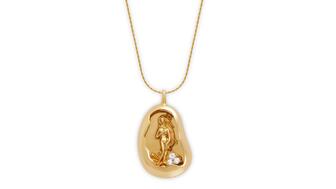
As a token of womanhood, this necklace depicts when Venus was born from the sea.
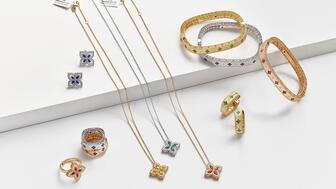
The deal gives the retailer control over the distribution of Roberto Coin jewelry in the U.S., Canada, Caribbean, and Central America.
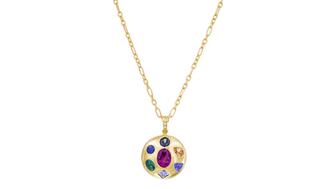
Show your mother some love with a piece of fine jewelry.
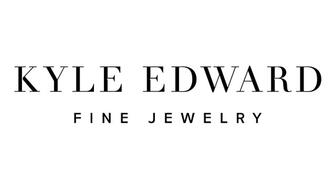
The company’s Easton location will remain open.














